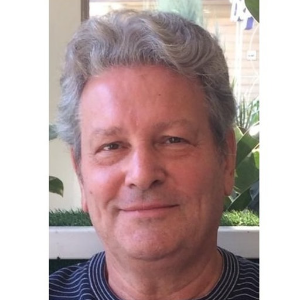Title : Molecular spectroscopic in-situ monitoring of biotechnologically significant processes in agriculturally important bacteria
Abstract:
The rapidly developing field of “green chemistry” has significantly facilitated advancements in a wide range of biotechnological and agricultural fields, so this progress is highly multidisciplinary. This talk illustrates the advantages of using two spectroscopic techniques, each of which has become a widely applicable tool in materials science, for molecular-level investigations in the fields related to microbial biotechnology and agricultural microbiology. One of them is Mössbauer spectroscopy (based on recoil-free nuclear γ-resonance – the Mössbauer effect) which has been shown to be extremely informative in bioanalysis (see, e.g., recent reviews [1,2]) and particularly for in-situ and often in-vivo monitoring of fine structural and redox transformations of iron species (represented by the Mössbauer-active 57Fe stable isotope) in bacterial cells [2,3]. Besides the basic scientific interest of such studies, the observed transformations are valuable for explaining and understanding the redox status of iron, one of the most important microelements, in bacterial preparations widely used and stored in the dried state (e.g., lyophilised cell biomass) in various biotechnological and agricultural applications, including biofertilisers. Fourier transform infrared (FTIR) spectroscopy is another highly informative modern instrumental technique which has long become routine in materials science but is yet under development in microbiology [4]. It is highly sensitive to macromolecular composition and structural transformations in microbial cells and biofilms, providing a wealth of information on metabolic changes induced by external factors, stress conditions, etc. [5–7]. One of highly important microbiological applications of FTIR spectroscopy is rapid in-situ monitoring of the accumulation and properties of intracellular granules of storage biopolymers such as polyesters of hydroxyalkanoic acids (polyhydroxyalkanoates) [4–6]. These biopolymers are of importance for bacterial survival in unfavourable conditions and, as isolated materials, per se represent a valuable ecologically friendly biodegradable substitute for traditional synthetic plastics.
This study has been supported by the Russian Science Foundation (Grant no. 24-26-00209).
REFERENCES
[1] Kamnev A.A., Tugarova A.V. (2017) Talanta 174: 819–837.
[2] Kamnev A.A., Tugarova A.V. (2021) Russ. Chem. Rev. 90: 1415–1453.
[3] Kamnev A.A., Tugarova A.V., Shchelochkov A.G., Kovács K., Kuzmann E. (2020) Spectrochim. Acta Part A: Mol. Biomol. Spectrosc. 229: 117970.
[4] Kamnev A.A., Tugarova A.V. (2023) J. Anal. Chem. 78: 1320–1332.
[5] Kamnev A.A., Dyatlova Yu.A., Kenzhegulov O.A., Vladimirova A.A., Mamchenkova P.V., Tugarova A.V. (2021) Molecules 26: 1146.
[6] Tugarova A.V., Dyatlova Yu.A., Kenzhegulov O.A., Kamnev A.A. (2021) Spectrochim. Acta Part A: Mol. Biomol. Spectrosc. 252: 119458.
[7] Kamnev A.A., Dyatlova Yu.A., Kenzhegulov O.A., Fedonenko Yu.P., Evstigneeva S.S., Tugarova A.V. (2023) Molecules 28: 1949.
Audience Take Away
- Applications of molecular spectroscopic techniques are useful in analysing both a wide variety of ‘green chemistry’ products and processes of their synthesis, providing information at the molecular level.
- Various experts could learn how to apply the techniques to be discussed in this talk in their own research or practice.
- The knowledge on the capabilities of the discussed techniques could be widely used to expand the scope in both research and teaching.



